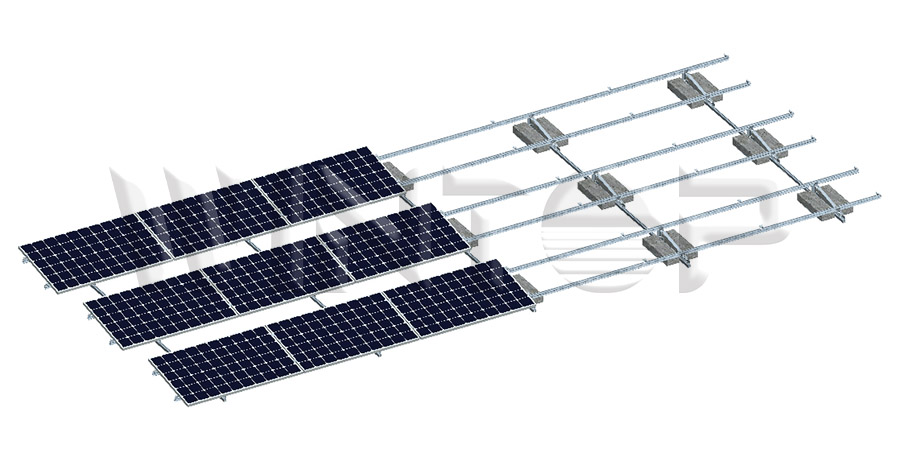When installing a
solar system on a flat roof, there are several important factors to consider:

1. Roof Load Capacity: The first consideration is to determine if the roof can support the added weight of the solar panels and the mounting system. Consult a structural engineer or roofing professional to assess the load-bearing capacity of the roof. The roof should be able to withstand the weight of the panels, racks, ballast, and any potential snow loads or additional equipment.
2. Roof Orientation and Tilt: Flat roofs offer the flexibility to optimize the orientation and tilt angle of the solar panels. The panels should be positioned to maximize sunlight exposure for maximum energy generation. The tilt angle can be adjusted based on the latitude and desired energy output. Additionally, orienting the panels facing south (in the Northern Hemisphere) or north (in the Southern Hemisphere) is generally beneficial for efficiency.
3. Equipment Placement and Spacing: Consider the layout and placement of other equipment on the roof, such as HVAC units, vents, or skylights. Ensure that there is enough space for the solar panels and the mounting system without obstructing access to these elements or creating shading issues. Proper spacing between panels is important to avoid shading and optimize energy production.
4. Mounting Options: There are various mounting options available for flat roofs, including
ballasted systems, penetrating systems, and
hybrid systems. Ballasted systems use weighted blocks or concrete pavers to secure the panels, while penetrating systems require roof attachments. Hybrid systems may combine ballasts and attachments for added stability. Consider the specific requirements of your roof, such as roof membrane type and warranty considerations, to choose the most suitable mounting option.
5. Waterproofing and Roof Protection: Proper waterproofing is crucial to prevent roof leaks. Ensure that the installation process includes appropriate flashing and sealing techniques to maintain the integrity of the roof. Additionally, consider using protective measures, such as slip sheets or rubber pads, to minimize potential damage from the mounting system rubbing against the roof over time.
6. Maintenance and Accessibility: Consider the long-term maintenance requirements of the solar system. Ensure that the mounting system allows for easy access to panels for cleaning, inspection, and maintenance. This may involve incorporating walkways or providing adequate spacing between rows of panels.
7. Local Regulations and Permitting: Check local building codes, regulations, and permitting requirements for installing solar systems on flat roofs. Consult with local authorities or obtain the assistance of a professional installer who is familiar with the local regulations to ensure compliance.
It is crucial to consult with a qualified solar installer or engineer who can assess your specific roof conditions, conduct a structural analysis, and provide guidance on the most suitable installation approach for your flat roof. By considering these factors, you can ensure a successful and efficient solar installation on your flat roof.


